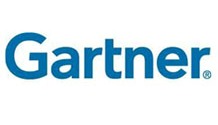  The role of Internet in today’s world has expended to to culture, society and business. The Internet of Things extends that role to encompass an increasingly diverse range of devices and communications streams, many of which will be essentially machine-to-machine communications, rather than involving a person at either endpoint, according to Gartner, Inc.
(Advt.- Reduce operating costs, radically simplify network with Cisco ASR 9000 nV)
Gartner defines the Internet of Things as the network of physical objects that contain embedded technology to communicate and interact with their internal states or the external environment.
"The volume of opportunities arising from the Internet of Things over the long term is generally agreed to be in the realm of very large to huge," said Stephen Prentice, vice president and Gartner Fellow. "Manufacturing opportunities, deployment, activation and ongoing management of millions of devices, and the analytical opportunities arising from massive streams of potentially real-time information all represent huge untapped business opportunities. Business and IT leaders should explore these developments, and focus not on what is new and different, but look more closely at what is essentially the same as existing business processes."
"Business leaders find the diversity of current Internet of Things applications fails to make a compelling business case to explore or commit resources to this emergent area. Equally, existing 'serious' enterprise applications seem worlds apart from the apparently consumer-focused Internet of Things buzz," said Hung LeHong, research vice president at Gartner.
However, over the past decade, the consumerization of IT has increasingly encroached on enterprise IT, steadily infiltrating and subverting enterprise infrastructure, first, with PCs, and then Wi-Fi, followed by the Internet, smartphones, media tablets and social networks. The days when technology originated in military and government circles and then filtered down via enterprises to individual end users are long gone, and the direction of technology migration has now been totally reversed, so skeptics would be well-advised to monitor these consumer-facing developments closely."
The sheer diversity of Internet of Things applications that have emerged to date is so broad that it is easy to become overwhelmed and yet find nothing that appears to relate directly to one's existing business. In reality, many applications that appear to be completely unique share an underlying functionality that is essentially common across the different applications.
Much of the differentiation and value of the Internet of Things resides not in the device, nor even the connectivity, but in the data aggregation, data-processing and decision-making activities that take advantage of the data streams emanating from the device (or the ability to remotely influence that device).
IT leaders are the natural entry point for new technology ideas in the enterprise. They can use their understanding and insight to objectively assess where and how these new developments might benefit their organizations in reducing the costs of existing operations and processes, or creating entirely new revenue streams and value opportunities.
The use of embedded systems in industry is well-established, and the Internet of Things extends these systems into significant new areas but also raises some confusion over the potential similarities.
"By understanding the various classes of devices that will likely populate the Internet of Things, the CIO will be well-placed to spot additional opportunities or see similarities that business colleagues may overlook," said Mr. Prentice. "By ignoring the details of each application and looking instead at the underlying characteristics of the different device types and how they can populate an Internet of Things infrastructure, the CIO or IT leader can bring clarity and insight to what appears to be a very confused set of possibilities. By simply classifying device types and functionalities, IT leaders make market segmentation and the identification of new business opportunities much simpler." |